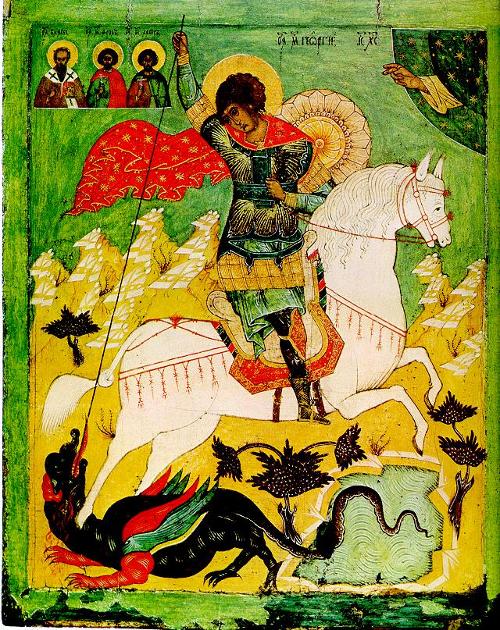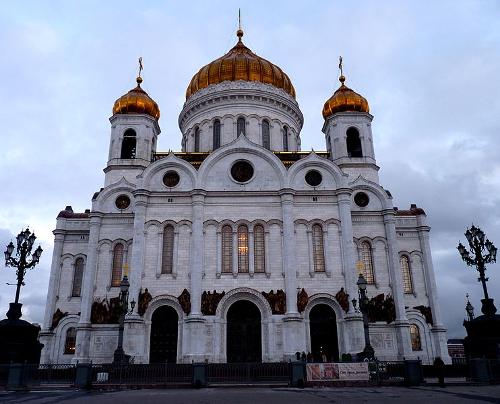RUSSIA
Religion

Religion

Cities in RUSSIA
| Moscow | Saint-petersburg |
Religion
 16th century icon St george and the dragon, RussiaPhoto: Public domain
16th century icon St george and the dragon, RussiaPhoto: Public domain
The Russian Orthodox Church (Russkaya Pravoslavnaya Tserkov) originated from the Byzantine (Greek Orthodox) faith. The Russian Prince Vladimir I of Kiev wanted to marry Anna, the sister of the Byzantine Emperor. However, he was denied permission because he was a heathen and was forced to first be baptized and adopt the Orthodox faith. Vladimir and all his people were baptized Orthodox in 988 and then he was allowed to marry Anna.
In 1448, the Russian Orthodox Church gained independence from the Patriarchate of Constantinople and was recognized as the only state church in Russia until 1905 .The Russian Orthodox Church is now the largest of all the Eastern Churches with about 100 million members; this includes the Belarusian Orthodox Church and the Ukrainian Orthodox Church. The Patriarch (also: Metropolitan or Archbishop) of Moscow has been the head of the Russian Orthodox Church since 1589.
During and after the Russian Revolution of 1917, the freedom of the Church in Russia was progressively restrained and imprisoned priests, bishops and believers. In 1938 almost all churches in the Soviet Union were closed. In 1961 the Russian Orthodox Church joined the World Council of Churches and after 1990 new churches and monasteries were allowed to be built. Religious education also became possible again and the separation between church and state was officially enshrined in law in 1997.
 The Cathedral of Christ the Saviour, MoscowPhoto: Dudva CC 3.0 Unported no changes made
The Cathedral of Christ the Saviour, MoscowPhoto: Dudva CC 3.0 Unported no changes made
A lot of the liturgy and rites of the Russian Orthodox Church are similar to those of the other Eastern Orthodox Churches, such as the Greek Orthodox Church. For example, Russian Orthodox crosses from the forehead, through the right shoulder to the left shoulder. In the 1950s, the then Patriarch of Moscow, Nikon, carried out reforms in Russian Orthodox teaching. For example, from now on believers have to strike a sign of the cross with 3 fingers instead of with two.
Many believers are against this reform and led proto-priest Avvakum they separate themselves off from the Russian Orthodox Church from Nikon. They call themselves Old Believers. However, the Russian Orthodox Church banned them, calling them schismatics. The ban was not lifted again by the official Russian Orthodox Church until 1971. The decisive distinction between the great Greek and Slavic churches and Western Catholic and Protestant Christianity is that the Eastern emphasize the world and resurrection of Christ, while Western theology emphasizes the atonement of the guilt on the cross and forgiveness.
Ca. 82% of the total Russian population is Christian. Besides the Russian Orthodox are Russian Catholics (especially in Moscow and Siberia, Baptists, Jews and Muslims (mainly Sunni Tatars, Basjkiren and Chechens).
Among the nomadic peoples in Siberia, especially among the Kalmuks, there are followers of Buddhism.
Most Mari and some of the Udmurts are animists and shamanists.
Sources
Graaf, A. van der / Reis-handboek Sovjet-Unie
Elmar
Rusland, Centraal-Azië en de Kaukasus
The Reader’s Digest,
Russia & Belarus
Lonely Planet
Te gast in Rusland
Informatie Verre Reizen
CIA - World Factbook
BBC - Country Profiles
Copyright: Team The World of Info